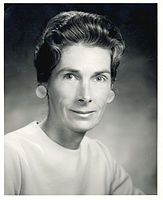User:Teromakotero/Autism/Unusual Reactions to Sensory Stimulation
Unusual Reactions to Sensory Stimulation
For people with autism is quite typical to react abnormally to the environment. In the background of unusual behavior can be a different response to sensation. Response to a sensory stimulus may be an over-sensitive reaction or no reaction at all. Both excessive reaction and too limited reaction can cause problems to person with autism and to his relatives. Some of these problems may be resolved by modifying the environment. Occupational therapy may also provide means to resolve these problems. With means of educational rehabilitation self-stimulation behavior can be relieved by guidance, exercises, and by providing opportunities to experience different sensations. (Kerola & Kujanpää 2009, 97.)
Sensory integration means a neurological process that parses the sensory information, making actions appropriate. Disorders in processing of sensory information cause problems for people with autism in development and learning. Sensory information processing problems can cause difficulties for autistic people to have control of their own behavior. They may also cause problems in the development of play as a child. (Kerola & Kujanpää 2009, 97.)
Anna Jean Ayres developed the sensory integration therapy (SI-therapy) in the 1960s. To perform SI therapy a specially trained occupational therapist is needed. In SI therapy you learn body's motor control, balance, cooperation between the various senses and playing skills. SI therapy uses the neurological and neuropsychological findings associated with autistic persons in its favor. (Kerola & Kujanpää 2009, 98.)
Sensory information processing problems are reflected in disturbances of sensory regulation, separation of sensory nervous system and sensory-based motor disorders (e.g. dyspraxia). Autistic person might become addicted to certain stimuli, and get stuck in certain clothes or dishes. Autistic people may react very sensitively to sounds or touch, but have a high tolerance for pain. Autistic people may react very strongly to ordinary sensations. (Kerola & Kujanpää 2009, 98.)
Autistic person might react poorly and weakly to sensory input and therefore is constantly searching for intense sensory experiences. For example, a continuous movement such as swinging can produce pleasure. To produce and understand words a number of different sensory channel collaboration is required. Therefore, sensory information structuring exercises are also important in the development of communication. (Kerola & Kujanpää 2009, 99.)
Carl H. Delacato developed in 1974 Delacato Method of Neurological Rehabilitation using Sensory Therapy, Delacato Therapy for autism, which seeks to train sensory activity. It is based on the idea of the flexibility of the brain and the possibility to affect the brain function with external stimuli. Delacato’s studies showed, that a number of autistic individuals have difficulties to parse their sensations. This difficulty may lead to autism spectrum individuals occurring behaviors such as wiggling, biting their own hand, sniffing, keeping their hands on their ears, light gazing, and other stereotypical behaviors. (Kerola & Kujanpää 2009, 99.)
